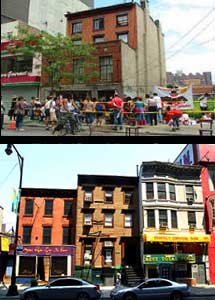I’m concerned that your recent editorial got the purpose of the co-naming of Duffield Street as Abolitionist Place dead wrong (“Sad irony on Duffield,” Sept. 22)....
Also, I want to make it very clear that my office, and other offices of elected officials and community leaders, will not allow Mayor Bloomberg to simply make an empty symbolic gesture while it continues to pursue the condemnation of historic homes....
I thank The Brooklyn Paper for highlighting the history of the Underground Railroad in Downtown Brooklyn, and for all The Paper does in fighting to protect the soul of Brooklyn against overdevelopment.
Here is the Paper's editorial response:
We’re not sure why the Councilwoman thinks our editorial was “dead wrong” when she ended up agreeing with all its main points.
The Brooklyn Paper has done a great job covering the Duffield Abolitionist homes, but it made a mistake in its original editorial:
In a statement, several City Councilmembers said the co-naming of Duffield Street as Abolitionist Place “supports the homeowners on Duffield Street, and the preservation of their homes.”
It does nothing of the sort. In fact, it allows the Bloomberg Administration to make an empty symbolic gesture that will not stand the test of time.
By all appearances, Bloomberg wants to "commemorate" Abolitionist history anywhere besides this stretch of Duffield. The point of the co-naming was the connect the history to that specific block. Tying the history to this specific block will undermine Bloomberg's attempt to make "an empty symbolic gesture."
This blog has already been critical of Brooklyn Paper's editorial, and we posted about it here. More importantly, we all agree on the importance of this block, and these differences represent variations on the ways to oppose the Bloomberg plan to destroy the Abolitionist homes.
